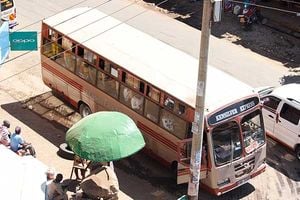Study: The rich misuse antibiotics more

The scientists said the data suggests that self-medication and treatment non-adherence were driven by perceived inconvenience of the healthcare system, financial barriers and ease of unregulated antibiotic access.
A new scientific study has established that antibiotic misuse is most common among the rich and least among the poor.
The experts were investigating the relationship between multidimensional poverty and antibiotic use in patient populations in Kenya, Tanzania, and Uganda. This means that, regardless of poverty status, difficulties in affording healthcare and more familiarity with antibiotics were related to more antibiotic misuse.
The scientists said the data suggests that self-medication and treatment non-adherence were driven by perceived inconvenience of the healthcare system, financial barriers and ease of unregulated antibiotic access.
“ We should not assume that higher deprivation drives antibiotic misuse. Structural barriers such as inefficiencies in public healthcare, combined with time and financial constraints, fuel alternative antibiotic access points and treatment non-adherence across all levels of deprivation.
In designing interventions to reduce antibiotic misuse and address antimicrobial resistance, greater attention is required to address structural barriers that discourage optimal antibiotic use at all levels of the socioeconomic hierarchy in low and middle-income countries (LMICs).
The scientists further disclosed that, globally, human consumption of antibiotics increased by over 60 per cent between 2001 and 2015, and use in LMICs is rapidly converging with richer nations.
“Antibiotic misuse, a widely acknowledged driver of antimicrobial resistance, includes behaviours like self-medication, accessing antibiotics without prescription, and incomplete treatment adherence (skipping doses or not fully completing a course).”
The researchers, however, pointed out that macroeconomic growth and related urbanisation are associated with the development of antimicrobial resistance hotspots and that deprived sanitation, which is more common in rural and urban informal settlements, increases the risk of bacterial infections and transmission of drug-resistant pathogens.
The researchers concluded that the association between poverty and antibiotic misuse might be influenced by sociodemographic, cultural, and facilitating contextual factors, such as the disease and pathogen landscape, pluralistic health-care systems, and regulatory infrastructures.
According to the United Nations Environment Programme, overuse and misuse of antimicrobials in humans and livestock is the primary cause of antimicrobial resistance. Human exposure to antimicrobial resistance can occur through regular consumption of food contaminated by antimicrobial resistance microorganisms.
The Lancet last year observed that, in 2019 alone, 1.3 million deaths were estimated to be directly attributable to antimicrobial resistance, the majority in sub-Saharan Africa and Asia.
In the same year, a global study conducted in 204 countries, including Kenya, found that bacterial infections that could not be cured by antibiotics because of resistance to drugs killed more people than HIV/Aids and malaria did in 2019.





